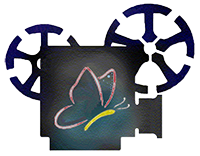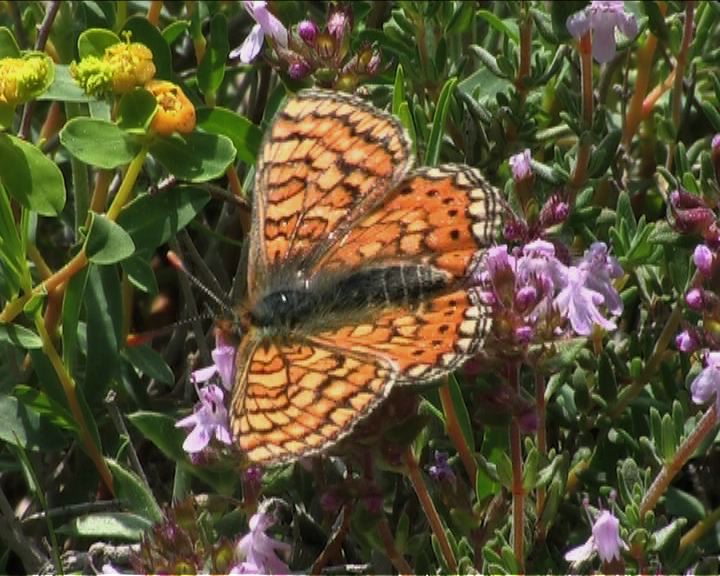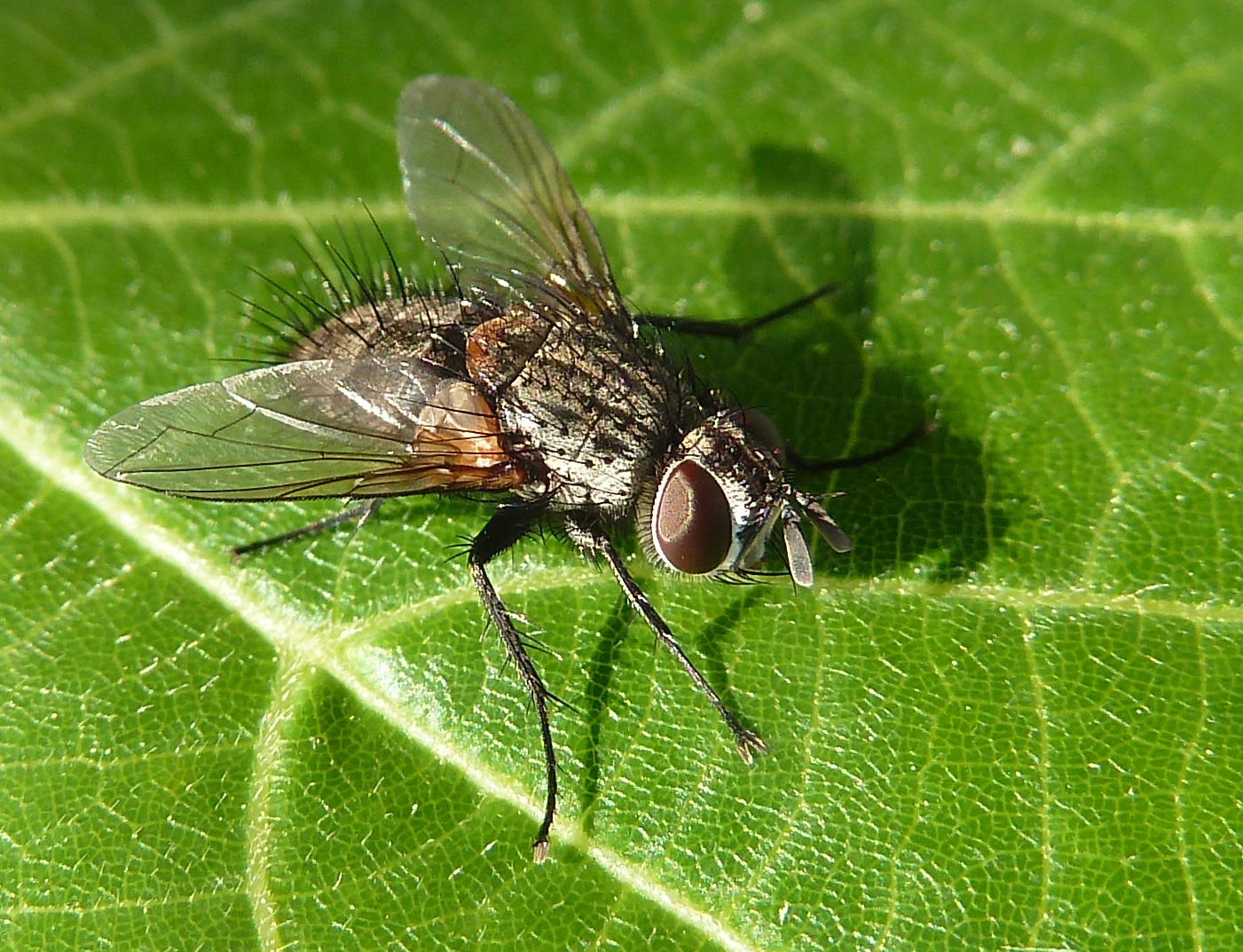

The Marsh fritillary (Euphydryas aurinia Rottemburg, 1775)
The provincialis subspecies of the Marsh Fritillary (E. a. provincialis), is a specialist of dry and rocky habitats in the Provence. It flies in one generation between late- April and June, and lives in distinct local colonies in the South of France, often abundant with strong fluctuations between the years. The subspecies provincialis is distinguished for its superior size and bright colours and the females lay their eggs on Scabiosa leucantha (Céphalaria leucantha), their most common host plant. Between 200 to 400 eggs are laid in piles on the underside of leaves. First yellow, the eggs turn, in 24 hours, to brown, and then turn purple just before hatching. In their fourth stage, the caterpillars create a nest close to the ground to hibernate. Around mid-March, the caterpillars moult and feed principally on Field Scabious (Knautia arvensis), its leaves being more developed at this time of year. The subspecies provincialis is sedentary and breeds year after year in the same patch.
Parasitoids Erycia furibunda (Zetterstedt, 1844) is a fly (Diptera) from the family Tachinidae parasitizing young and freshly moulted caterpillars of the Marsh Fritillary (Euphydryas aurinia). This tachinid puts fully developed larva in the silken nests of the Marsh Fritillary. The larva (maggot) penetrates the skin and develops inside the body of the caterpillar (endoparasite).
Identified by Dr. Hans-Peter Tschorsnig

Tachinideae : Euphydryas aurinia parasitized by Erycia furibunda
